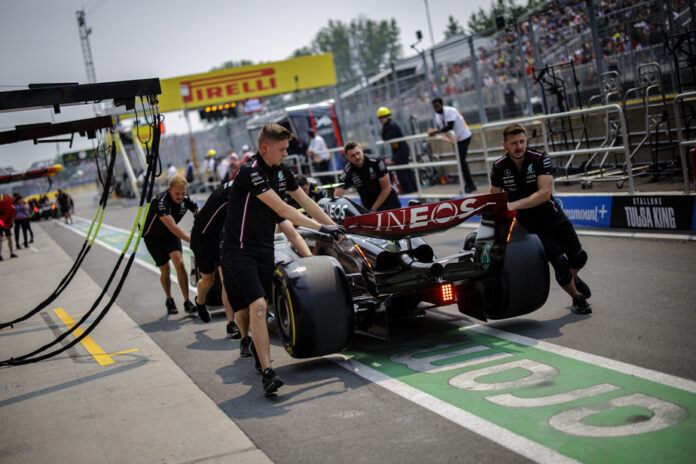All the wealth ostentatiously flaunted in the metropolis this weekend almost makes us forget – in fact, did we know? – that Formula 1 teams can no longer spend as much as they want.
Since 2021, a cost cap has been imposed. This measure, in effect for a third season, is subject to several criticisms, while one of its main objectives could take years to be achieved.
Several teams had to seriously reorganize their finances when this cap was put in place. From 145 million US initially, it has since fallen to 140, then to 135 million for the current season. This is actually the maximum amount each team can spend during the year to improve the performance of the car.
This includes costs related to car parts, team personnel and certain equipment, among others. Pilot salaries, marketing operations and other budget items are excluded. Exceeding the current cap can lead to penalties for offending teams – Red Bull notably paid a fine in 2021.
One of the avowed aims of this move was to narrow the performance gap between the richer and less wealthy teams. Three years later, the results are not yet visible in the standings: in 2022, the three leading manufacturers have taken 78% of all available points, a proportion equal to that of 2019, the last full season before entering the force of the ceiling.
“It is still far too early to judge the effects on grid tightening; it will take years before we can see it, “said Mercedes technical director James Allison on Friday.
This observation is consistent with the development cycle of cars. However, beyond their results on the track, the teams with more limited resources are demanding a series of changes which, if they do not materialize, could keep the disparity in the classification forever.
One of Williams’ demands, while not sexy to the public, could have a major impact on parity in F1. In a press briefing on Friday, technical director James Vowles pleaded for the relaxation of rules concerning investments in infrastructure and advanced instruments.
His stable, he says, is “15 to 20 years behind” on that front, the result of “underinvestment” due to lean years. This money is now “available”, according to Vowles, but the cap in place cuffs the company, which would have to inject funds that number in the tens or even hundreds of millions to bring themselves up to the level of the top teams. in facilities, equipment and software.
Since 2018, the team has finished last in the constructors’ standings four times. “There is a strong desire to bring Williams back to a competitive position,” his manager said.
His grievances are supported by opponents stuck in a similar situation, including Alpine and McLaren.
Otmar Szafnauer, team principal at Alpine, pointed out that in the years before the cap came into force, when the discussions leading to this measure were going well, the leading teams invested large sums knowing what was waiting for them. “They knew it would be harder to do it later,” he remarked. We did not have the necessary budgets at the time. »
He therefore adds his voice to that of Williams to ask for exceptions so that teams with a deficit of infrastructure can make an upgrade. This “so that everyone works on an equal footing”.
Over the past few months, Szafnauer has made it very clear what he thinks of the spending cap, which top teams are exploiting “loopholes”, he says. For example, he has already suspected opponents of having assigned certain people to other tasks or of having changed their job title in order to subtract their salary from eligible expenses.
The leading teams reject this criticism. On the contrary, they lament the rigidity of the ceiling which, they say, will force them to part with talented workers who could take better paying jobs in another industry. Christian Horner, Team Principal at Red Bull, recently made a statement about this.
Its technical director, Pierre Waché, supported his remarks on Friday. And his counterpart at Mercedes, James Allison, felt that “if we lose experience in our teams, we shoot ourselves in the foot”.
Managers from all teams agree, however, on the importance of the cap, perceived as “necessary” to ensure the “financial health” of their sport.
This measure “is bound to evolve”, concluded Otmar Szafnauer. “There’s definitely more work to be done to make it better,” Allison said.
But will she be better in everyone’s eyes? We’ll see.















